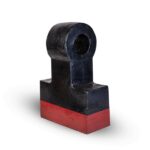A quick guide on how to choose the right coal crushing hammer for your needs
Recent Posts
Recent Posts
Manual vs. Mechanical Harvesting of Sugarcane: An Agricultural Evolution
Enhancing Industrial Efficiency: The Power of Crusher Hammers
A quick guide on how to choose the right coal crushing hammer for your needs.



Coal crushing hammers are an essential tool in the power industry, used to crush coal into smaller particles for efficient combustion. Choosing the right hammer for your business can have a significant impact on productivity, downtime, and cost-effectiveness. With so many different types of hammers available, it can be challenging to determine which one is best suited for your needs. In this article, we will provide a quick guide on how to choose the right coal crushing hammer for your needs, including an overview of the different types of hammers available and their advantages and applications. By the end of this article, you will have a better understanding of how to select the right hammer for your business and optimize your coal crushing operations.
There are different types of hammers available, including traditional hammers made of high-chromium iron or manganese steel, bimetallic hammers, and duometal hammers. While traditional hammers are still widely used, bimetallic and duometal hammers are gaining popularity due to their superior durability and performance.
Bimetallic Hammers :
Bimetallic hammers are made of two different types of metals that are fused together to create a stronger and more durable hammer. The hammer’s working end is made of a wear-resistant material, such as high-chromium iron or manganese steel, while the hammer’s shank is made of a tough, low-carbon steel.
The wear-resistant material provides the hammer’s crushing surface and is designed to withstand the high-impact forces of coal crushing. The tough shank material provides structural support for the hammer and helps to prevent the hammer from breaking or cracking during use.
Duometal Hammers :
Duometal hammers are similar to bimetallic hammers in that they are made of two different types of metals. However, duometal hammers are made by welding two different metals together, rather than fusing them together as in bimetallic hammers.
The working end of the duometal hammer is made of a wear-resistant material, such as high-chromium iron or manganese steel, while the hammer’s shank is made of a tough, low-carbon steel. The two metals are welded together to create a strong and durable hammer.
Advantages of Duometal Hammers :
Duometal hammers offer several advantages over traditional hammers, including:
Superior Durability: Duometal hammers are highly durable and can withstand the high-impact forces of coal crushing. The welding process used to create duometal hammers creates a strong bond between the two metals, which helps to prevent the hammer from breaking or cracking during use.
Increased Productivity: Duometal hammers can increase productivity by reducing downtime due to hammer replacement. Traditional hammers typically need to be replaced more frequently, resulting in more downtime and decreased productivity.
Improved Wear Resistance: Duometal hammers offer improved wear resistance compared to traditional hammers. The wear-resistant material used in the working end of the hammer provides superior wear resistance, which can help to extend the hammer’s lifespan.
Applications of Duometal Hammers :
Advantages of Hammers :
Bimetallic hammers offer several advantages over traditional hammers, including:
Improved Durability: Bimetallic hammers are more durable than traditional hammers due to their unique construction. The wear-resistant material used in the working end of the hammer provides superior wear resistance and can withstand the high-impact forces of coal crushing, while the tough shank material provides structural support and prevents the hammer from breaking or cracking.
Increased Productivity: Bimetallic hammers can increase productivity by reducing downtime due to hammer replacement. Traditional hammers typically need to be replaced more frequently, resulting in more downtime and decreased productivity.
Lower Cost: Bimetallic hammers can be more cost-effective than traditional hammers over the long term due to their increased durability and reduced replacement frequency.
Applications of Bimetallic Hammers :
Bimetallic hammers are commonly used in the power industry to crush coal. They are ideal for use in high-wear applications, such as coal crushing, where traditional hammers may not be durable enough to withstand the high-impact forces.
When choosing a coal crushing hammer, it is essential to consider the specific needs of your business. Some factors to consider include the type of coal being crushed, the size of the particles needed, and the frequency of hammer replacement. Bimetallic and duometal hammers may be more cost-effective over the long term due to their increased durability and reduced replacement frequency.
In conclusion, choosing the right coal crushing hammer is crucial for optimizing productivity and reducing downtime and cost. By understanding the different types of hammers available and their advantages and applications, you can select the hammer that best suits your business needs and ensure efficient coal crushing operations.


